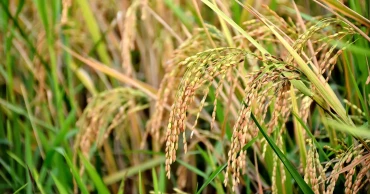Cereal
10 Delicious Quinoa Recipes for Weight Loss
Weight loss is a journey that often requires a balance between nutritious meals and regular exercise. If you are looking for a healthy and tasty food to shed extra pounds, try quinoa. It offers a blend of protein, fibre, and essential nutrients. Quinoa, originating from South America, has gained immense popularity due to its health benefits and versatility in the kitchen.
Key Health Benefits of Quinoa
Quinoa is a superfood. It offers a range of benefits that make it a desirable addition to any diet. Here are some of its key advantages:
- High in protein, aiding in muscle development and repair- Rich in fibre, promoting a feeling of fullness and aiding in digestion- Low glycemic index, making it suitable for diabetics- Packed with essential vitamins and minerals like iron, magnesium, and B vitamins.
This nutritous grain can be a game-changer in losing weight in a healthy way.
Read more: 7 Healthy, Delicious Egg Recipes for Breakfast
10 Tasty Quinoa Recipes for Losing Weight
Quinoa Bowls
Ingredients
1/2 cup quinoa (rinsed), 1/8 teaspoon salt, 2 tablespoons honey, 1/2 cup almond milk, 1/2 cup fruit (like blueberries), 1/4 cup walnuts (coarsely chopped), and 1 banana (sliced).
Instructions
First, add quinoa and water to a saucepan. Sprinkle some salt and bring it to a boil. Reduce the heat and let it simmer for 15 minutes, covered. Once most of the water is absorbed, fluff it up with a fork.
Then, add milk and honey and give it a good stir. Divide the delicious mixture into two bowls. Finish off by garnishing with almond milk, fruits, banana slices, and nuts. Time to savour!
Read more: Top Traditional Bangladeshi Foods You Must Try
Quinoa with Vegetables
Ingredients
125 grams white quinoa, 1/2 medium zucchini (diced), 1/2 green bell pepper (diced), 1/2 green and yellow chilli (chopped), 2 apricots (optional, diced), 250 ml vegetable stock, 1 teaspoon salt, 1 spring onion stalk, 100 grams rajma (shelled), 2 garlic cloves, 1 tablespoon olive oil, a few sage leaves, and a few rosemary leaves.
2 years ago
14 Top Rice Varieties in Bangladesh
The production of cereal crops in Bangladesh has increased, especially the production of rice. Paddy production was 109 lakh metric tons in 1971, which increased to 564.15 lakh metric tons in 2021 (as per the UN report). Currently, Bangladesh is third in the world in rice production. A total of 8500 varieties of rice are preserved in germplasm in Bangladesh.
Bangladesh Rice Research Institute (BRRI) invented 107 varieties of rice, Bangladesh Atomic Agriculture Research Institute released 25 varieties of rice, and Bangladesh Agricultural University released three varieties of rice. Apart from this, some universities and research institutes in Bangladesh have developed several new varieties of rice.
However, there is some traditional naturally grown rice in Bangladesh. This article will cover the popular and currently available rice in Bangladesh.
Read More: 15 Top Rice Varieties in the World
14 Most Popular Rice Varieties in Bangladesh
Rice has long been considered a symbol of the national prosperity of this country. Food security in Bangladesh basically refers to the safety of paddy or rice. And the following rice has satisfactory production in Bangladesh.
Aman Rice
Among the rice varieties of Bangladesh, Amon ranks at the top regardless of region and production volume. It is also known as winter rice, as this paddy is planted from December to January.
Most of the Aman rice grown in the lowlands of Bangladesh is of the floating variety, locally known as Jali Dhan or Agrahayani Dhan. All are highly photoperiod-sensitive. It is cultivated almost everywhere in Bangladesh. There are about 2,000 cultivars in Bangladesh and more than 6,000 across Asia.
Balam Rice
Greater Barisal was once famous for its traditional thin Balam rice. Since ancient times, Balam rice has been cultivated in the southern region in the fertile in the Ropa Aman season. However, this rice is almost extinct now.
Read More: Govt to import 100,000 MT of rice from India and Singapore
At present, instead of Balam rice, the farmers are cultivating another rice called Shahi Balam of BR-16 variety on a small land. Recently Aman Balam has been available in different shops, which is similar to Balam.
BRRI Rice
The high-yielding and hybrid l rice developed by the Bangladesh Rice Research Institute (BRRI) is called BRRI rice. Initially, they were called BR rice. Now BRRI has hundreds of rice categories, and a few of them are popular. For example, in Amon season, BRRI Dhan 87, which is known as Ropa Amon, has huge popularity.
From this paddy, white long and thin-grain rice is obtained. In addition, the drought-tolerant Aman (BRRI 71), whose rice is long and thick, white in color; The high-yielding Ropa Amon (BRRI 75), whose rice is medium coarse and white in color, and the tidal salt tolerant Ropa Amon (BRRI 76) are also popular. These rice are grown in almost all parts of Bangladesh.
Chinigura Rice
BR 34 variety of rice has been developed by BRRI. The rice obtained from this paddy is called Chinigura Rice, which is the commercial name of this rice. It is grown in the northern part of Bangladesh, such as Naogaon.
Read More: Rice, wheat import: Bangladesh Bank asks banks to keep minimum LC margin
However, the quality of the invented rice is very similar to that of the original traditional Chinigura rice. Chinigura is quite small in size and used in biryani and sometimes in dessert items.
Digha Rice
Mainly grown in Harirampur and Manikganj, Digha Dhan is water friendly, meaning that it does not get damaged by waterlogging or excessive rain. It has wide varieties, but Boga Digha and Hijal Dhiga as popular in the flood-prone areas of Bangladesh. Boga Digha rice grows with rain water and flood water. There is no other cost to cultivate Boga Digha rice except the cost of rice seed and land cultivation.
Hori Rice
Gives more yield - such a new variety of rice was discovered by Haripad Kapali, a farmer of Jhenaidah Sadar Upazila. Which later came to be known as 'Hari Dhan,' and its cultivation started in different parts of the country. The yield is 800-880 KG per bigha, and the bunch of the paddy is strong and sturdy. However, this rice is thick but tasty.
Read More: Give plastic, get rice and other food items: Bidyanondo’s initiative for a waste-free St Martin’s Island
Kalijira Rice
Kalijira rice is one of the best quality rice produced in Bangladesh. This black-colored rice is very tasty, and it is called small Basmati rice. The method of cooking it is almost the same as basmati rice.
This rice is not sticky. Kalijira rice is a geographically indicated product of Bangladesh. This rice is also used in cooking polao, and it is very fragrant. Kalijira is grown in Sherpur, and sometimes it is also sold as Chinigura.
Tulsi Mala Rice
Tulshimala is a photosensitive Amon variety of aromatic rice. The rice is fluffy and tasty, great for polao, biryani, khichuri, rice, cake, fried rice, and other dishes. The reputation and prosperity of Sherpur's Tulshimala rice date back hundreds of years.
Recently Sherpur district branded it as fragrant rice Tulshimala. Although different types of aromatic rice are produced in different districts of the country, Sherpur's Tulshimala rice is different in quality and aroma.
Read More: Food Minister for increasing zinc-enriched paddy cultivation
Katari Bhog Rice
Katari Bhog is a fragrant rice of Bangladesh. It is mainly found in the Dinajpur area. Katari Bhog of Dinajpur is a geographically indicated product of Bangladesh. This rice looks slim and tall. Its tip is slightly pointed and curved like a knife.
This kind of rice is not grown in all areas of Bangladesh. Even in Dinajpur, only Fasilahat, Chhota Baul, Bara Baul, Karimulapur, Khanpur, Chirirbandar Upazila of Dinajpur Sadar Upazila, Kaugaon, Bishtapur, Talpukur Mukundpur, Durgadanga, Viyail, Paschim Baul and Kaharol upazilas cultivate this rice.
Bina Rice
It is a high-yielding, light insensitive, and short duration (138-148 days) Boro rice variety with premium quality, which looks extra tall and slim. The leaves of this variety are erect, narrow, and medium, dark green in color.
Even after the paddy matures, the leaves remain dark green and straight. This type of paddy tree is tall but strong and does not fall. It is grown in highland areas such as in the northern parts of Bangladesh.
Read More: Govt to procure 3 lakh mts Aman paddy at Tk 28 per kg: Food Minister
Miniket Rice
Although there is no rice cultivated in the country called miniket, the Bangladeshi market is flourished with miniket. It is mainly a marketing name. Usually, BRRI 28 and BRRI 29 are marketed mostly under the Miniket name. In the northern part of the country, most of the rice called Miniket is produced from a type of rice called Jirashail.
Besides, this rice is also being produced from rice called BRRI Dhan52, Suballata, and Jira. According to some people, two parboiled rice of any type of thin/narrow paddy is converted into miniket rice.
Najir Shail Rice
The rice we buy in the market, called Najir Shail, is not real Najir Shail rice. The cultivation of this rice is very low, so its rice is not available in the market. But, BRRI 29 rice is further trimmed and polished to give the name 'Nazir Shail.' It is also made from Katari and Jira rice.
Payjam Rice
Payjam rice is generally cultivated more during the Rupa Aman season. This rice is often produced more or less in all districts. Payjam rice looks short and slim in size. It is produced from Aman rice. It has several physical benefits, such as controlling diabetes, being rich in antioxidants, increasing digestion capability, and more.
Read More; Workshop disseminates enormous benefits of zinc paddy
Kaun Rice
Kaun rice was the food of the poor. However, the price of the small grain crop is now beyond the reach of the poor. Kaun is now luxury rice. These grains do not contain sugars like other rice or wheat. Nutritionists recommend Kaun rice as a superfood.
Health-conscious people choose this rice very easily. Kaun rice was used to be cultivated in every village. It is usually cultivated in the northern and southern regions of the country. However, currently, it is cultivated in almost all the districts of North Bengal.
Final Words
Bangladesh is home to a wide variety of rice varieties. Each variety has its own unique characteristics and is used for different purposes. From the aromatic Katari Bhog to the high-yielding BRRI varieties, Bangladesh has a wide range of rice varieties to meet the needs of its people. The country has a long history of rice cultivation and is constantly striving to produce more varieties to meet the needs of its people.
2 years ago



